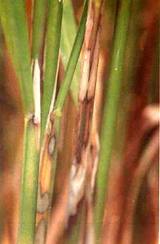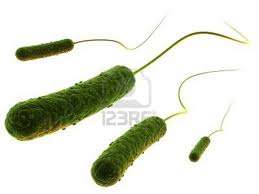Bacterial Blight of Paddy Host: Oryza
sativa Systematic Position Pathogen: X.oryzae Division:Bacteria
Sub-division:Proteabacteria Class:Gammaproteabacteria Order:Xanthomonadales Family:Xanthomonadaceae
Genus:Xanthomonas
Species:oryza
Introduction
This
is one of the dangerous disease in paddy crop. This was first reported in 1884
from Japan and now from ‘Mexico and South-East Africa’. In India,
it was first reported in ‘Poona’ in
1959 leading to a loss of 6-60% in
the yield.
Symptoms
·
Leaves
turns yellow, dry rapidly, wilts and roll up as the spots enlarge
·
Lesions appear along the length of the leaf
blade
·
Lesions
are yellowish starting on leaf tips to downwards later increases in length and
width (usually have a wavy margin)
·
During
young stage, lesions are yellow in
colour and turns to white colour in
old stage.
·
In
dry conditions, bacterial drops
oozed and turn to yellowish band on
the leaf surface.
·
Blighting
may extend to the sheaths of culms grains and kills the tiller or whole culms.
Casual organism
The bacteria "Xanthomonas oryza”
causes leaf blight disease of paddy
Structure of bacteria
These
are rod shaped, gram –ve, non-spore forming bacterium with a capsule and single polar flagellum occurring
singly in pairs.
Disease cycle
The
main source of ‘primary infection’
is seed which carriers pathogen both internally and externally. Disease spreads
through the droplets of water or direct contact leading to’ secondary infection’.
 
Infected
leaf Bacteria
Favorable Conditions
·
High
humidity i.e., 20-30%.
·
Optimum
temp., i.e., 25-30⁰c.
Control measures:
·
Using
of disease resistant varieties.
·
Changing
the crop frequently.
·
Field
sanitation.
·
Treating
the seed in hot water before sowing
·
Using
chlorine water for irrigation
·
Seed
treatment with chemicals like ‘Agrimycin’,
‘Streptocycline’.
| 




